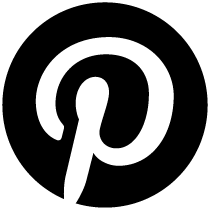Hanna Rochereau’s Abandoned Jewellery Shop
At Hauser & Wirth, Paris, the artist’s unnerving works reflect on the remnants of consumerism
At Hauser & Wirth, Paris, the artist’s unnerving works reflect on the remnants of consumerism

The streets around the Champs-Élysées in Paris are lined with shops selling luxury commodities; windows are packed with displays of extravagant wealth, proffering rings, watches and diamond-set necklaces in gold and platinum. One space in the district, however, is devoid of this glitz: Hanna Rochereau has turned Hauser & Wirth’s showrooms into an abandoned jewellery shop. The exhibition is the first in a new series, ‘Hauser & Wirth Invite(s)’, which welcomes early-career artists to inhabit the gallery’s usually private second floor. Rochereau’s sculptures and paintings reference the furniture, window dressings and packaging of the bustling streets outside. However, they are stripped of precious metals and people, leaving behind incongruously stacked vitrines and piles of dusty boxes.

In her paintings, Rochereau works from photographs of shop windows and storerooms, found online or taken herself, removing their original contexts and stripping away markers of commerce – logos, text and the saturated polish of the commodity. Among the six paintings presented here, this can be seen in new works like Lost in the Box (2025) and Untitled (2025), where densely layered black acrylic swirls across the backgrounds of her canvases. These darkly painted sections protrude from the canvas, draping over and around stacks of bare boxes, emptied paper shopping bags, unwritten signs and wooden frames, their price lists whited out to leave blank paintings within paintings. This stark textural and tonal contrast gives the sense of a thick curtain lifted for a moment, allowing a glimpse of what is hidden underneath.

In the centre of the room is the installation Screen in Play / Out of Play (2025), a series of wood and glass display cases for jewellery piled on top of one another. Their wooden parts are sanded down, revarnished and tarnished to suit the pale parquet floor and white walls of the gallery. They sit between display and decay, their up-ended compartments suggesting something both preserved and forgotten. Placed around the work’s surfaces and within its vitrines are sculptures made from stands used in a prior life to display rings, earrings and necklaces. Titled ‘Boxes in Boxes #9 – #15’ (2025), they are constructed from white and transparent Perspex formed in contours suggesting a breastbone, glass-like pillars or the soft split pillow of an open ring box in which gold might sit. Though they are absent from Rochereau’s sculptures, the suggestion of these sought-after objects remains. Coiled ribbons of silver plastic hint at the shining metals that once adorned these display models, providing a glistering trace of the commercial world that lent these objects value by association.

Most works engage directly with the gallery’s surroundings, but one painting, Untitled (2024), depicting stacks of shoeboxes, introduces a shift in focus, hinting at the exhibition’s second chapter, when it will relocate to Shmorévaz, a project space housed in a former shoe shop, on 29 March. The shoeboxes combine the birthdates of the artist’s close friends with the year the work was made. The boxes, with their connections to figures unknown to the viewer, suggest something which isn’t on view: collections of personal memories and histories. This captures the wider ambience of Rochereau’s presentation: the works sit between past lives and afterlives; these are objects that have been touched, handled, displayed, discarded and are now reassembled in a kind of archival suspension. Immersed in an ambient eeriness, this exhibition has an unnerving quality – a hauntology of the blank and forgotten showroom, where the remnants of display outlast what they once framed. In a district built on the spectacle of luxury, Rochereau’s works compel their audience to consider what remains when commerce fades, and whether contemporary art itself shares in this spectral existence.
‘Hauser & Wirth Invite(s): Hanna Rochereau’ is on view at Hauser & Wirth, Paris, until 12 March. As part of ‘Hauser & Wirth Invite(s)’, an artist, a gallerist and a writer occupy the Paris gallery’s second-floor space. For Hanna Rochereau’s exhibition, a curatorial text was written by Salomé Burstein to accompany the exhibition
Main image: Hanna Rochereau, Forever (detail), 2024, acrylic on canvas, 160 × 70 cm. Courtesy: © Hanna Rochereau, Shmorévaz, Paris, and Hauser & Wirth, Paris; photograph: Nicolas Brasseur
























